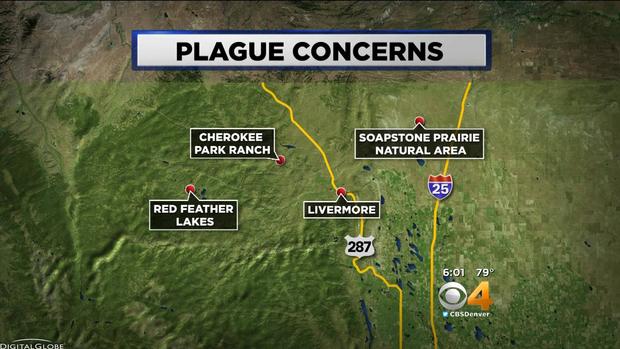Larimer County Teen Death Blamed On Hidden Form Of Plague
DENVER (AP/CBS4) - When a Larimer County teen came down with a high fever and muscle aches, his family thought he had the flu. But he was dead within days and the rare cause was only revealed later.
Taylor Gaes had been infected with the plague, likely by fleas that put the bacteria directly into his blood stream, making it difficult to spot in time to stop its spread.
The 16-year-old died June 8, but the cause was only made public late Friday when health officials, at the urging of the boy's parents, put out a warning to make sure others who may have visited his family's rural home near Fort Collins hadn't been sickened by the fleas that could have infected him.
DR. DAVE HNIDA'S BLOG: What You Need To Know About The Plague
Some 200 people visited or attended the recent ash-scattering ceremony for the popular basketball and football player at the property. The incubation period for them expired Monday, said Katie O'Donnell, a spokeswoman for the Larimer County Department of Health and Environment.
"If they're not already sick they're probably not going to get sick, but again it's not just the area and that memorial. If people are out hiking and backpacking in that area it's good to be aware of as well," O'Donnell told CBS4.
Cases of the plague are rare and deaths are even rarer. Nationally, an average of seven human plague cases is reported each year, with an average mortality rate of 11 percent, according to the Centers for Disease Control.
The last time someone died of the plague in the United States was in 2013 in New Mexico, a case of the less-common septicemic plague, the same form Gaes is believed to have had. Colorado's last plague death was in 2004 and it was also a case of septicemic plague, said Jennifer House, Colorado's public health veterinarian.
There are three main forms of the plague and all are caused by the same bacteria, Yersinia pestis, which is typically spread by fleas that have fed on infected rodents.
In the most common form, bubonic plague, the infection spreads through the body's tissue into the lymphatic system, producing tell-tale swelling of the lymph nodes. In septicemic plague, the bacteria directly enters the blood stream and, without the swelling, its symptoms of fever, chills and abdominal pain, can look like the flu.
The third and least common type is pneumatic plague which involves pneumonia and is capable of spreading among people through coughing.
While all types can be treated and cured when antibiotics are given soon after infection, all of them are deadly when treatment is delayed.
Most U.S. cases are in the West where rodents, including prairie dogs, carry the disease. Cases are most common in the Four Corners region where Colorado, Arizona, New Mexico and Utah meet but cases have also been reported as far north as Canada, said Paul Ettestad, the state public health veterinarian for New Mexico. The last person to die of the plague there was a person with the septicemic variety in 2013.
In Larimer County, where Gaes lived, no resident has contracted plague since 1999. So, without any swelling, it's not something that would typically be on people's minds, O'Donnell said.
"It's very hard for anyone to look at someone and say that's a disease we only have every 10 or 15 years," she said.
RELATED: 'Shock & Disbelief' Says Baseball Coach Of Teen Who Died From The Plague
County health officials are working with the CDC to test wildlife on the family's property to see if the animals have the plague. If tests are negative, O'Donnell said it's likely that investigators will never know for sure the source of Gaes' infection. But the plague has shown up in areas near the property in Cherokee Park, Livermore, Red Feather Lakes and Soapstone Prairie, which is actually closed to the public now. The last three cases present in Larimer County all happened in that region.
- By Colleen Slevin, AP Writer
AP medical writer Lindsey Tanner and CBS4 staff contributed to this report.
(TM and © Copyright 2015 CBS Radio Inc. and its relevant subsidiaries. CBS RADIO and EYE Logo TM and Copyright 2015 CBS Broadcasting Inc. Used under license. All Rights Reserved. This material may not be published, broadcast, rewritten, or redistributed. The Associated Press contributed to this report.)







